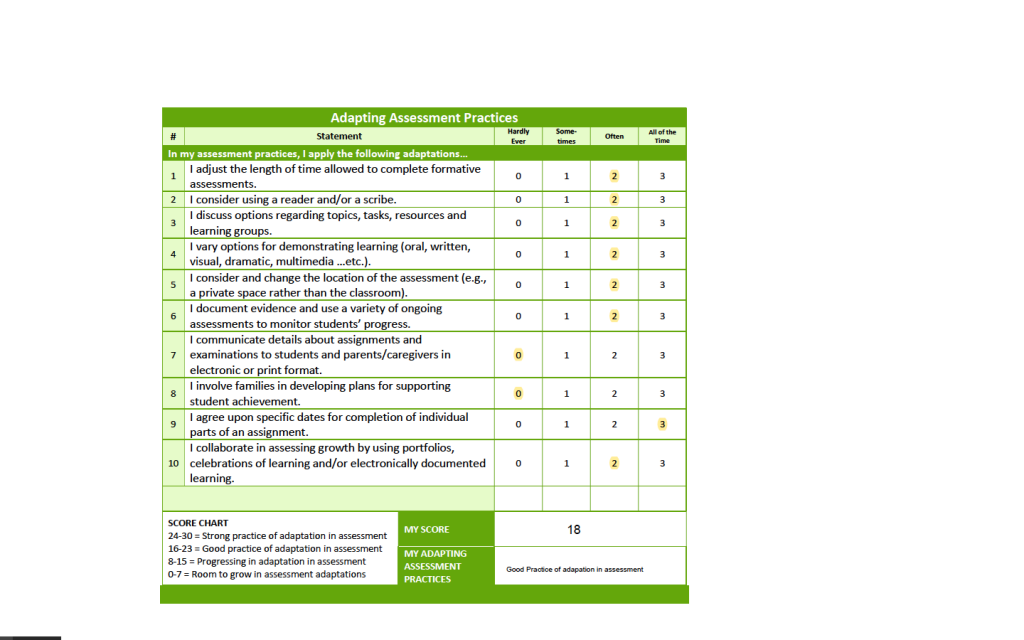This is a
Section one: Where are we going?
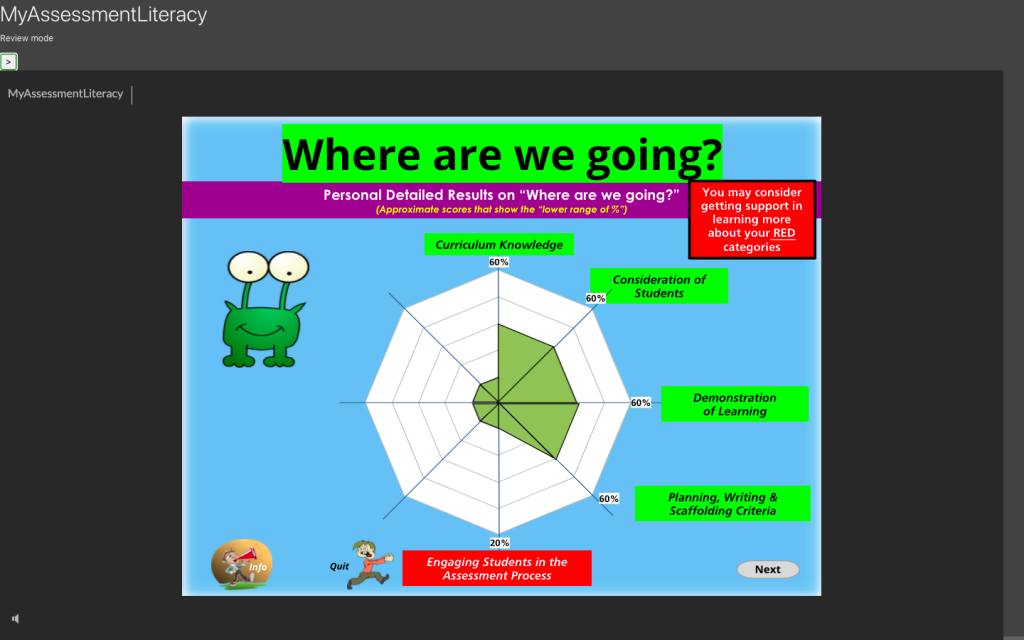
Section 2 : How are we doing
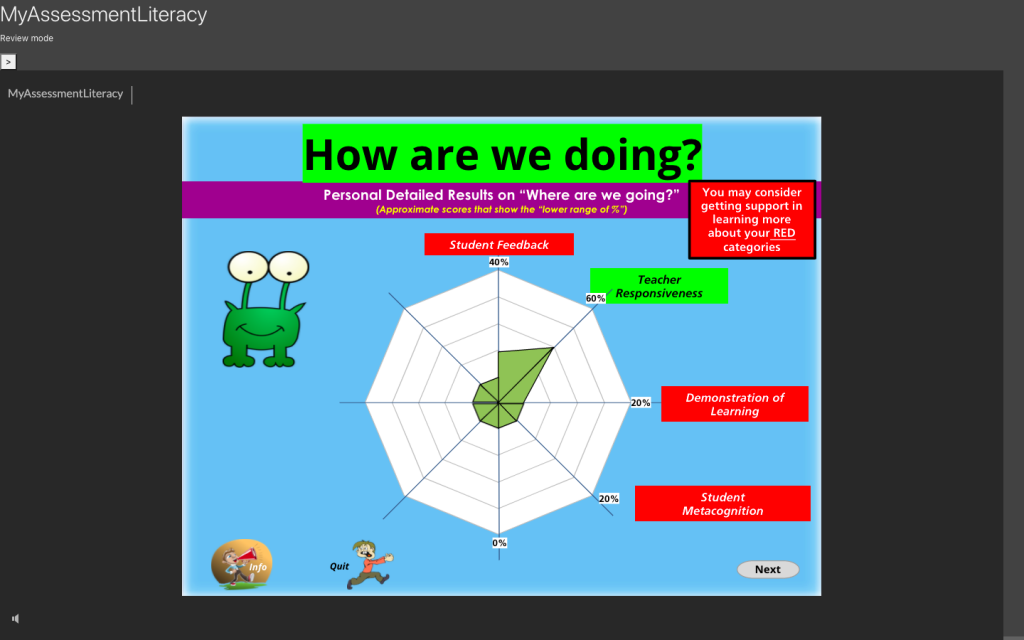
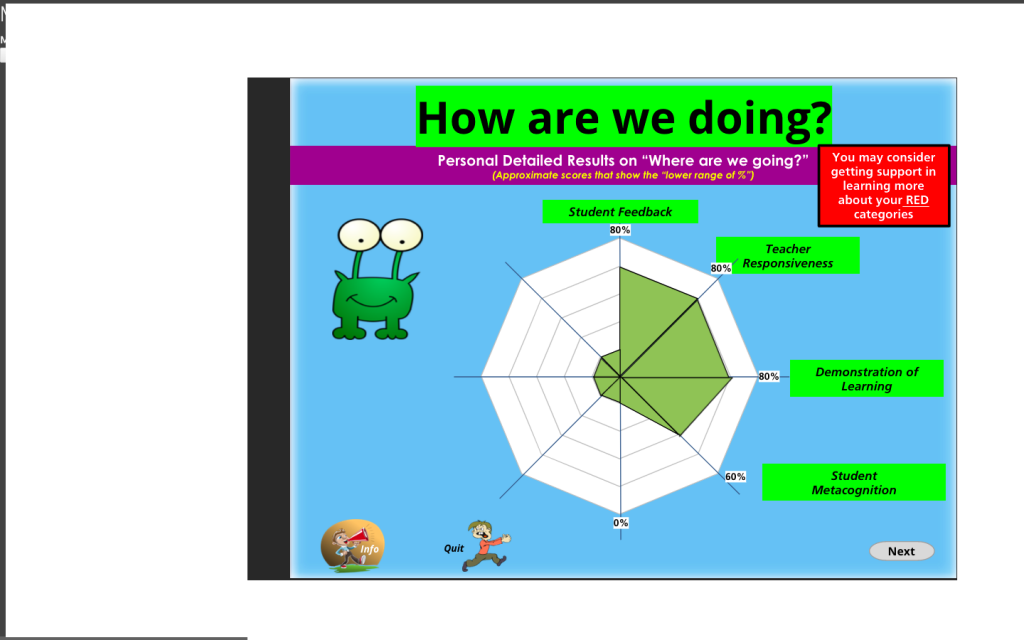
Section 3: Where to next?
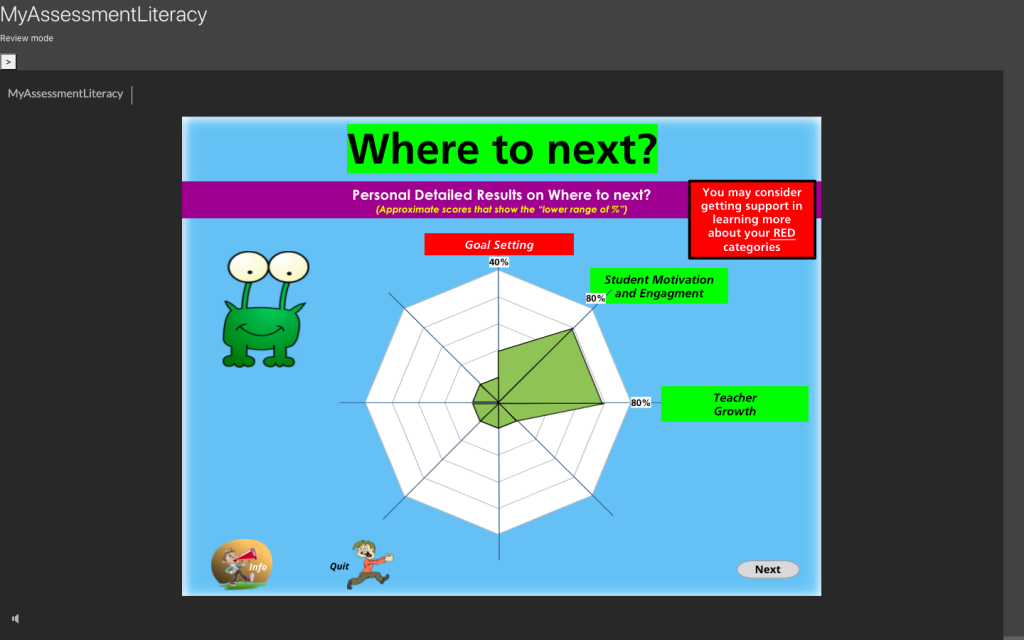

Section 4: Communicating with stakeholders
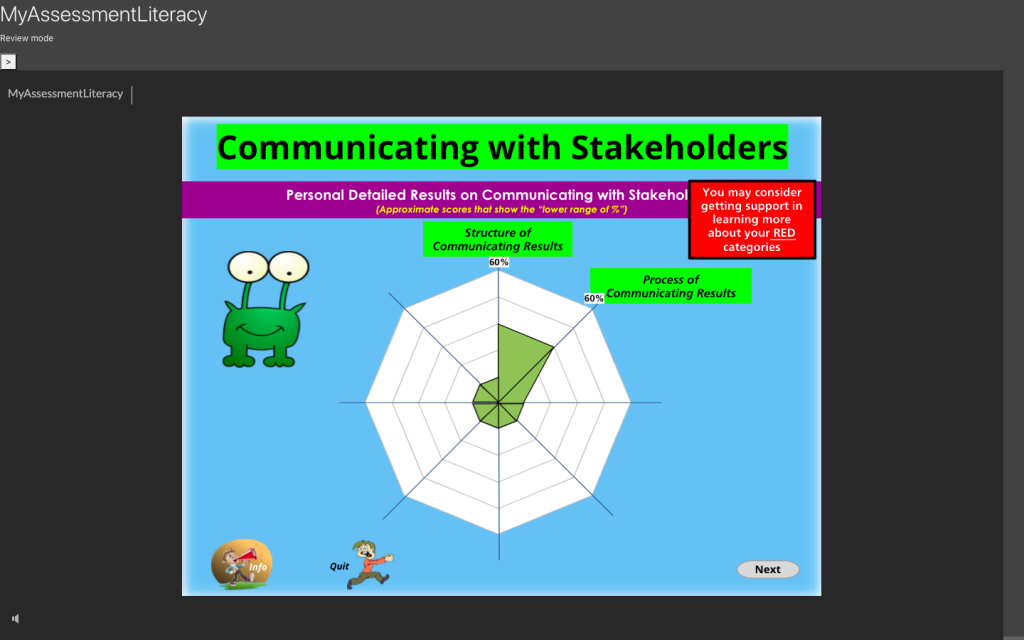
Section 5: System-based Assessment Literacy
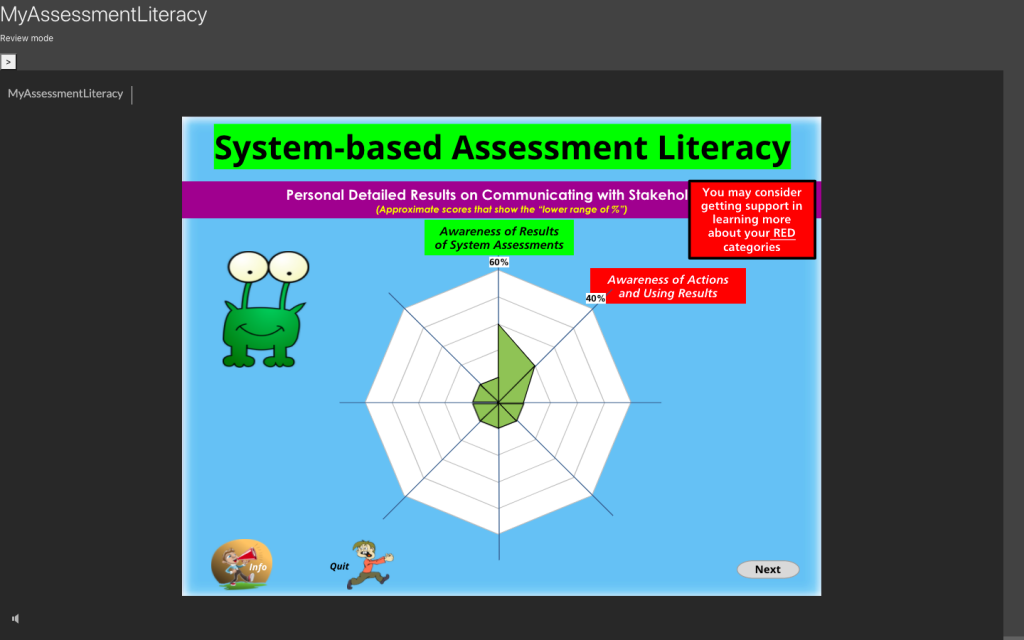
Final Section: Assessment Literacy

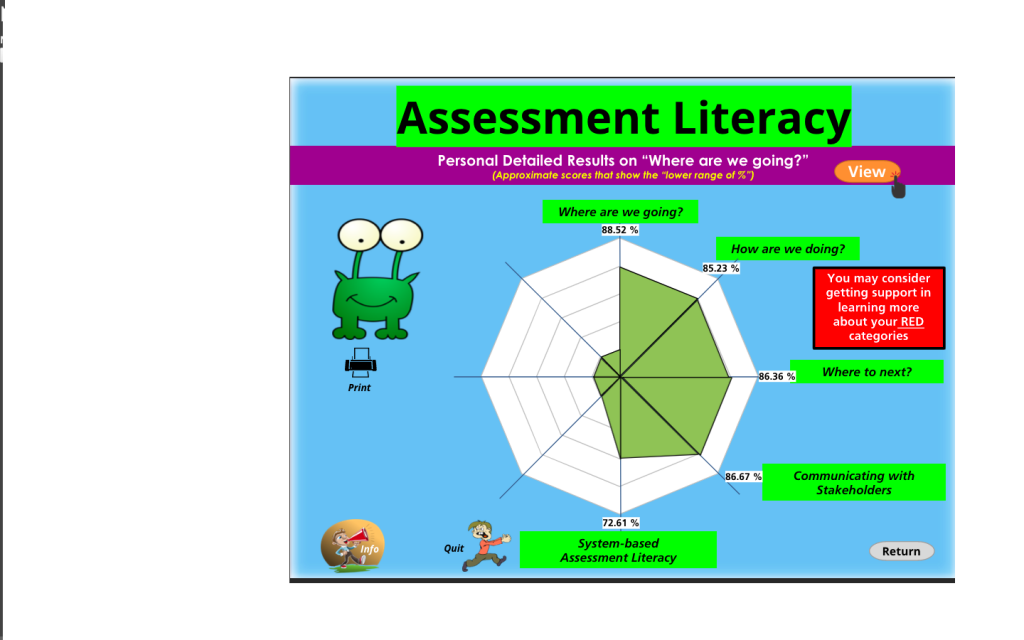
This is a
Section one: Where are we going?

Section 2 : How are we doing


Section 3: Where to next?


Section 4: Communicating with stakeholders

Section 5: System-based Assessment Literacy

Final Section: Assessment Literacy


As my university journey winds to an end and my teaching career begins I find myself reflecting on assessment. When I began this journey in the fall of 2018, my understanding of assessment was very cut and dry. The assessment was a grade on a paper, whether or not students understood the content and it was directly related to testing. I truly believe this was a reflection of my own experiences in school, where the emphasis was placed on grades and whether or not you passed. If you had a low grade that reflected your understanding and that is as far as discussion around assessment went. This was part of the reason my ideas of assumption were so cut and dry. My education journey began to change this introducing us to the concept of summative and formative assessment, and how to create meaningful assessments for student learning. In January 2022, my idea of assessment had grown along with my understanding of how to assess students but the introduction to the reason behind assessment, the purpose of assessment, and specifically, data collection feels like my core understanding is whole. This is not to say, I do not have more to learn but the foundation has been laid to start building my experience in assessing students in the Inclusive classroom and beyond.
I would like to begin with the 5 big ideas I learned through my time in ECS 401 these include: analyzing data, shared responsibility of assessment, effective feedforward, miscue instructions more specifically carrying out the task, and lastly the importance of learning logs. These 5 big ideas were the most meaningful in my journey of assessment. The first concept that was new to me was the idea of collecting and reviewing data. I should mention I understood the first level criterion-referenced, relating to curriculum objectives and the level of difficulty. This is something that is crucial to classroom assessment and played a role in the assessment tasks I created for my Grade 9 social studies class. My understanding of standards referenced, self-referenced, norm-referenced, and longitudinal-referenced were murky and frankly nonexistent. I should clarify, that I understood how data was compared between divisions, provinces, and over previous years but the specific terminology and importance were not something that occurred to me. Something that helped me the most in understanding was the portion related to PCAP and PISA, more specifically the visual diagrams and comparisons. As someone who enjoys visual aids, it increased my comprehension greatly. PCAP additionally guided my thinking in relation to inclusive education specifically the emphasis placed on the core subjects such as reading, mathematics, and science; I argue that it might be worthwhile to include writing skills and Treaty education. In addition, I question why there needs to be such a divide between male and female achievements. I feel understanding data has and will help me in my learning goal which is assessing students at different levels in the inclusive classroom.
The second big idea that I have gained in my assessment journey and my goal setting is the concept of shared responsibility of assessment. For me, this is allowing students to have more input in their learning and final assessment. This is not handing the reins over to students to decide every aspect of their learning but taking into considerations some of their strengths and interests. Incorporating this into my classroom and assessment will be useful because it increases student engagement which in turn can boost moral in the classroom. In my own experience, when students can give input it initates learning along with motivation to succeed. This practice is mildly time consuming but I do feel like it can help students at different levels and educational experiences.
The third big idea that has helped me is the concept of feed forward. Feed forward has not only helped me in achieving my learning goal but additionally my feelings of assessment in the inclusive classroom. Wording it as feed forward helps students see responses to their work in a more of a positive light. It is a great way to motivate students while having them take accountability for their learning. For students who struggle with self esteem related to marks or are learning at a lower grade level it is a confidence booster knowing that the information that is being given to them is helping them to succeed rather than critiques. This big idea was very important to me and has guided me in my assessment journey.
The fourth big idea, I enjoyed exploring was the usefulness of learning logs or journals. I have always seen journaling as a tedious class especially when I was attending school. That being said, as an inservice teacher I have been able to look at the concept of learning journals as useful. They do not necessarily need to be used for marks but rather a way to track student growth and engagement. Students can reflect on their work to see growth they have made over the semester or year. I additionally feel it is useful tool for tracking and reaching IIP goals, for students who are working towards specific goals, learning or behavioural. The feeling of looking at where you have grown is a rewarding experience for any student. I feel it is important to make sure that the journals are not just filler activities for students, which can make them feel mundane instead of a tool for learning. As I reflect on the near future, I would certainly begin journals early on and keep them consistent through out the year, all while explaining students the importance of these activities.
My fifth and final big idea I would like to share is related to Miscue instruction and how to carry out this instruction. In previous courses we explored using reading and tracking students as they do to screen fro reading comprehension. It was rewarding to go review this concept once more in ECS 401 especially as I near the beginning of my journey as an in service teacher. This is a rewarding diagnostic tool that can help diagnosis where students are in realtion to reading skills. This is helpful for differentiated instruction and assessing students at different levels in their learning journey. It is a simple task that is not an extremely stressful diagnostic activity. This is certainly something that would compliment my goal of an inclusive classroom in the future. I intended to make this into account when working with students especially at the beginning of the year to gauge student levels and abilities.
The independent assignment that was most rewarding and useful was the dialgoue and connections piece. I chose to focus on assessment in the inclusive classroom by interviewing two intensive support teachers both working in different programs. One of the most meaningful conversations I had that have really helped me move forward in my inclusive education journey was when my first interviewee explain how she sees formative and summative assessment in her DC classroom. She explained that formative is what students are capable of doing and summative constantly happening and always being assessed on the go. My internship taught me a great deal about assessment in the inclusive classroom, but re-framing the concept was rewarding and something that has supported me in my journey.
My experience in ECS 401 has helped me deepen my understanding and knowledge of assessment. It has helped to lay a foundation for my journey and it is now time to start building my career on this foundation. ECS 401 not only expanded my knowledge but additionally introduced me to big ideas including but not limited to anaylzing data, shared responsibility of assessment, effective feed forward, and the importance of journal logs. Lastly it reviewed the importance of miscue instruction and cemented my previous understanding. I am looking forward to seeing where my journey takes me as I transition into life as an inservice teacher.
I have chosen to focus my dialogue and connections on assessment in the Inclusive Education field. The Ministry of Education states: “Inclusive education creates environments where students feel accepted, valued, confident and safe to engage in learning and where collaborative teams are committed to a shared vision to support students in reaching their full potential”(Government of Saskatchewan, 2017). I want to investigate how assessment is slightly different in an inclusive classroom, in addition, explore the similarities it has to mainstream classrooms. Assessment is not always about grades but rather it can be focused on goal setting, as it is at the core assessment is reaching an established goal. My dialogues will be with two Inclusive Education teachers in the field. Both will offer a unique view of how they implement assessments in their classrooms. Both interviews are conducted with educators who work in Inclusive Education, one in a Functionally Integrated Academic Program (FIAP) and the second in a Developmental Program (DC). These questions are tied to how assessment plays a role in the inclusive classroom. Both interviewees hold an Inclusive Education certificate through the University of Regina. The dialogue is meant to highlight how goals are adjusted and carried out to meet students’ needs.
First, I wanted the interviewees to share the programs they are teaching. Both programs fall under the umbrella of Special Education however, they offer different experiences for student learning. Teacher DC for students with severe medical and cognitive disabilities, DC is where students focus on daily living, personal hygiene, routines, communication, mobility, and building meaningful relationships with those around them. A typical day for DC students includes public outings, music therapy, culinary class, swimming, and grocery shopping. Teacher A pointed out that the main focus of the culinary class is on sensory engagement and independence in the kitchen. Teacher B teaches in a Functionally Integrated Academic Program (FIAP) which focuses on supporting students with moderate intellectual disabilities in developing life and vocational skills. The hope is that all students experience a high quality of life and success following their high school experience. FIAP additionally includes opportunities for students to integrate into the mainstream classroom for additional classes, for example: Practical and Applied Arts, Cooking, Drama, Art Education, and Life Transitions. Each of these classes focuses on an end goal of independence and helping students towards success.
I wanted to explore how assessment is executed in the Inclusive Classroom, which is one of the questions Teacher A tackled during our conversation. Because most intensive support programs do not have a planned curriculum assessment is all goal-focused and more specifically, focused on Inclusion and Intervention Plans. Prior to my interview with Teacher A, I had never fully thought of Inclusive Education as formative or summative, this conception was reworked during our conversation. Teacher A explained that though DC has no curriculum the IIP goal observation is done in the heat of the moment with the lead educator constantly taking note of what is being completed. This was a new way of looking at assessment in the Inclusive Classroom for myself, as I often neglected to consider summative assessment as t part of intensive support. This discussion moved further into how formative and summative assessment played a role in completing IIP goals. Teacher A explained that formative assessment is based on what students know and or are capable of doing. For example, if a student can sign to ask for assistance, this is formative. Whereas summative assessment is done on the go rather than sitting to write a test or completing an essay. Teacher A explained that summative assessment in intensive support is specifically watching students reach the IIP goals that have been set for them. Prior to this conversation I always carried the lens that formative and summative assessment could only really be applied in mainstream classrooms but Teacher A helped me to see that in fact, formative and summative assessment can take on many forms.
Both Teachers A and B shared how goals are set and tailored to each student in their classroom. Teacher A explained that goals in the DC classroom are focused on independence and accessing the world around them. For students who are nonverbal, these goals include American Sign Language, Picture Exchange Communication System, and Pragmatic Organization Dynamic Display Communication Books. Teacher A explained that goals are set with students’ strengths or abilities and asking how can these goals improve their challenges. Teacher B explained that sometimes goals are initiated by paraprofessionals and or guardians, but for some students, the lead educator is the one who initiates these goals. When these goals are initiated the teacher works with guardians and paraprofessionals to help students reach these goals Teacher B explained that it is crucial that student goals be achievable and unique to that student. Both teachers agreed that goals are based on a students’ highest needs and these goals need to be revisited regularly to assess success. It is important to add to the conversation that when an IIP goal is created with any professional or team member, the goal needs to be specific, measurable, meaningful or manageable, attainable, realistic, and time-related (Saskatchewan Ministry of Education, 2017). These are often referred to as SMART goals and students are given a time frame where they will reach this goal. For example: By June 2023 Student A will be able to initiate a conversation with another student using PECS 50% of the time. This goal has a time, is meaningful to a student, and is achievable.
I asked both teachers who are involved in the IIP goals-setting process. Both agreed that supports are diverse and differ from student to student. Teacher A explained that in the DC involvement includes classroom teachers, Educational Assistants depending on the circumstance, parents/guardians, therapists such as Speech, Physical and Occupational Therapists to meet speech and or mobility goals. All these goals are discussed with a specialist. An example teacher A explained is that goals related to speech are discussed with a Speech-Language Pathologist. Teacher A further explained something critical to understanding IIP goals setting in intensive support is working within students’ capabilities, as they may not reach that goal but the success they reach is no less important. Teacher B offered an additional perspective on those involved in IIP goal setting, which included Education Assistants and professionals in outside-based agency supports which included Children and Youth Services, Community Living Service Delivery workers, and social workers. Both teachers agreed the involvement of outside sources and intervention is dependent on students’ needs.
I felt it was necessary to ask Teacher A what are some of the common misconceptions about assessment in inclusive education. Teacher A disclosed that one of the common misconceptions about inclusive education and working in inclusive education was the lack of paperwork because there are no grading papers or exams. In reality, goal setting and lesson planning are important parts of teaching in an inclusive education environment and there is just as much work as mainstream teaching. Teacher A went further to explain that there is a tendency to underestimate what students are capable of especially when a student is non-verbal when in reality students have a unique set of skills that they bring to the classroom. This sentiment shared was so important and one of the main reasons I chose to follow a path in Inclusive Education. A disability or different ability does not define a student, it is important to look past these barriers to see the person inside. This discussion led to my final question, regarding the most rewarding part of working in an inclusive classroom.
In my own experience, working in an Inclusive setting allows one to create strong bonds with students from all walks of life. Teacher A shared a similar sentiment with me during our interview, explaining the most rewarding part was the students themselves, watching students succeed, building connections that go beyond verbal ones, and having fun. An additional perk Teacher A shared is the opportunity to watch students grow over a long period of time. Teacher B shared a similar sentiment, as Teacher B has worked with some of her students for almost five years. Watching students grow and accomplish their goals is arguably one of the most important parts of an assessment in an inclusive classroom.
Through these dialogues and conversations, I was able to explore what assessment means in an Inclusive Education classroom. Both teachers offered diverse perspectives on inclusion as they both work in very different settings. Teacher A’s role is much more communication, mobility, and independence related, whereas Teacher B works in an academic setting to support students in day-to-day life. Despite the differences, both Teachers use assessment and more specifically IIP goals for students. I have been fortunate to shadow Teacher A and intern under the guidance of Teacher B and both professionals have offered guidance and are personal role models. What they have offered me is something I will certainly consider going forward in my education journey at university and beyond.
References
Government of Saskatchewan (2017). Inclusion and Intervention Plan Guidelines. Ministery of Education. Retrieved from: https://www.srsd119.ca/wp-content/uploads/2018/02/Inclusion-Intervention-Plan-Guidelines_2017.pdf
Government of Saskatchewan (2017). Inclusive Education. Ministry of Education. Retrieved from: https://www.srsd119.ca/wp-content/uploads/2018/01/SSS_RL_SKED_Inclusive_Education_2017.pdf
Fractions and anything Math related is huge sources of anxiety for me. Interestingly enough I did research and Math anxiety is in fact a form of anxiety that is not uncommon for students. My initial reaction to fraction work was existential dread as dramatic as that sounds, which is part of the reason I put off the activity for so long. It may sound odd, being that anxious about math but this has been something I have struggled with. My initial response to where I think I am was the “help” selection. I did not want to set my sights too high.
The first round was difficult, I will be blunt. The easy-level questions were just that very easy, but as it progressed so did my anxiety. I found myself guessing right away just clicking until I got the right answer.
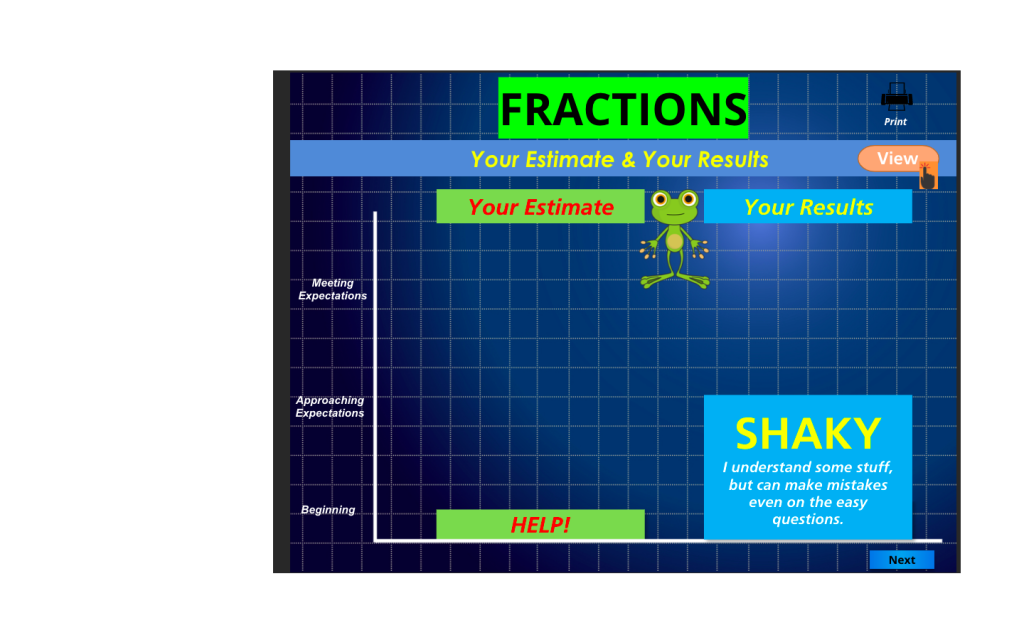
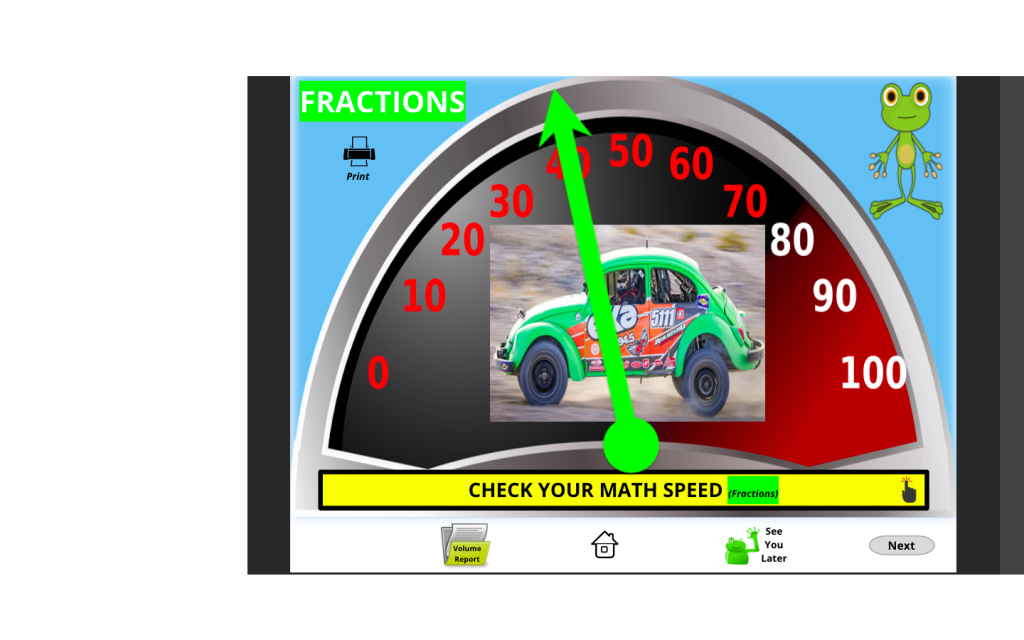
My second attempt was one I took more time to do. A mixture of memory and recall kicked in which made it easier to complete the questions. Math is something I certainly need to work on learning and teaching. I am capable of teaching it (as my pre-internship in the winter of 2021 proved) but it is not something I would jump at the opportunity to teach. My goal is to work on improving my math anxiety to reach a place where I am comfortable completing math tasks comfortably.
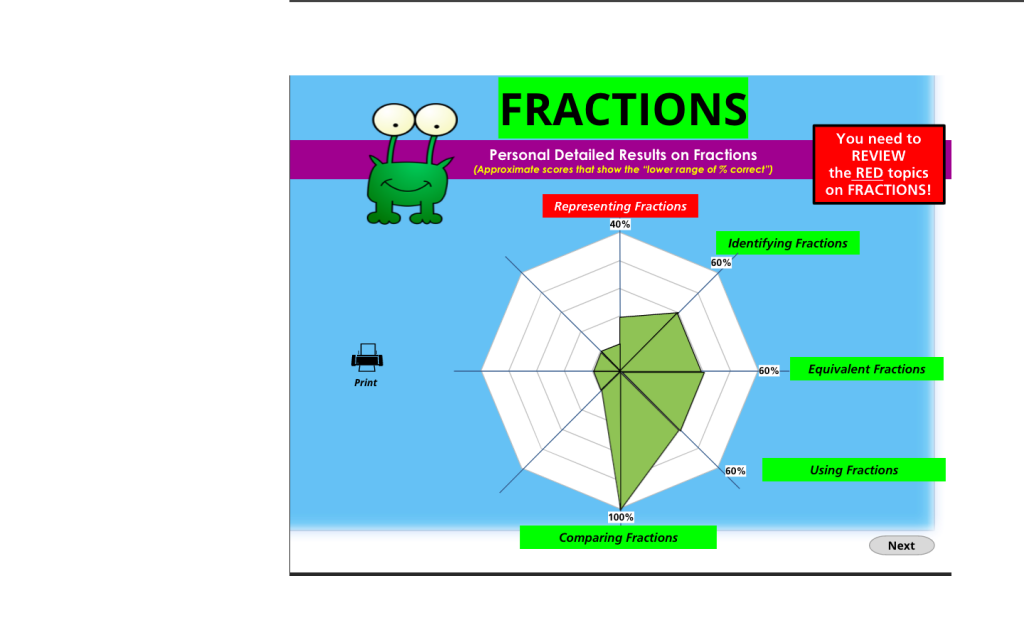
The following are two quizzes I recently took in relation to cultural inclusion and fair assessment.
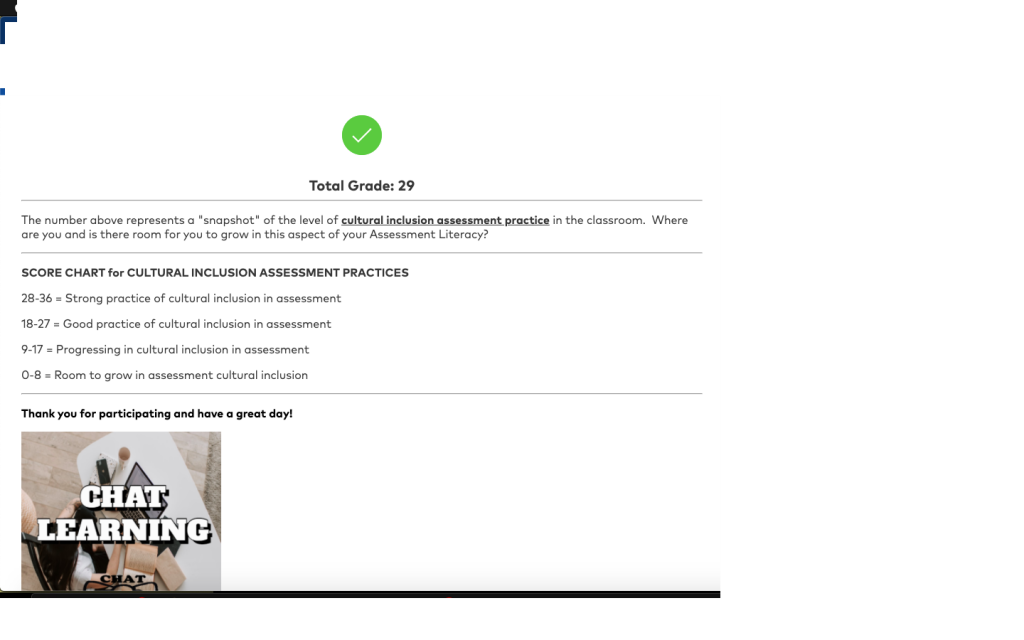
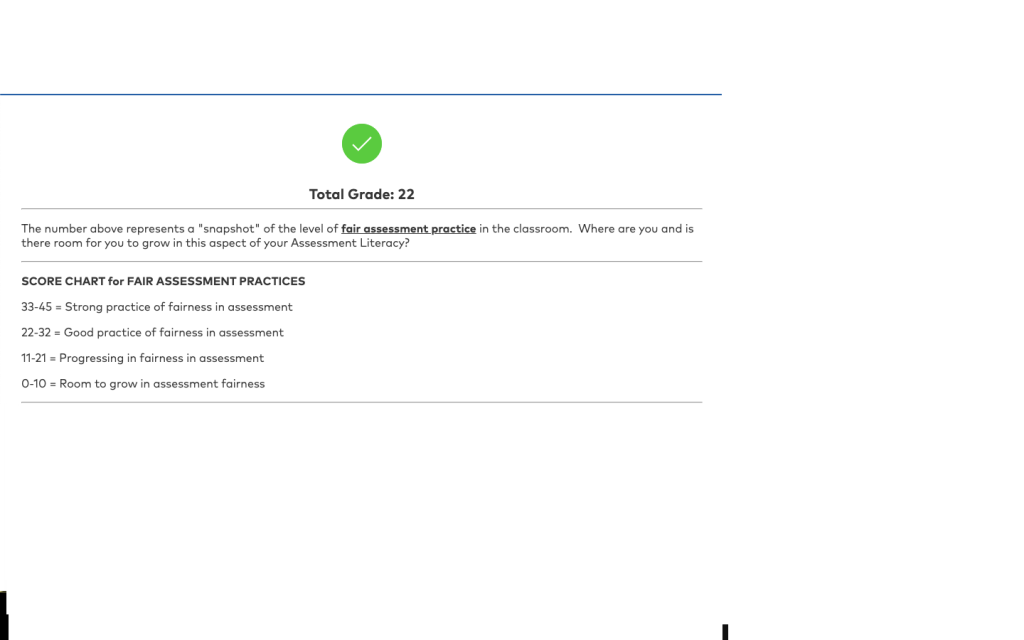
PISA compares Canadian (Saskatchewan) to other countries around the globe. Going through this chart was rewarding because it gave insight into how we stack up against other countries. Some surprised me and others were what I expected.


My thoughts
On the interactive map, there is no data from any of the African countries. I wonder what it would take to work with the education system in these countries to share the data? In addition, how would it compare to Saskathcewan?
The Council of Ministers of Education calls PCAP: “the most recent commitment from CMEC to inform Canadians about how well their education systems are meeting the needs of students and society” (n.d). Though I was aware there were programs in place to note student achievement but did not know the specifics or that there was such a catchy acronym. It was interesting to observe how success has been monitored over time. The interactive charts were the most intriguing part of the experience. Ironically, the Ministry of Education mentions the territories but there is no evidence from the territories.
Below I will feature some of the charts presented in the system and my observations of each.


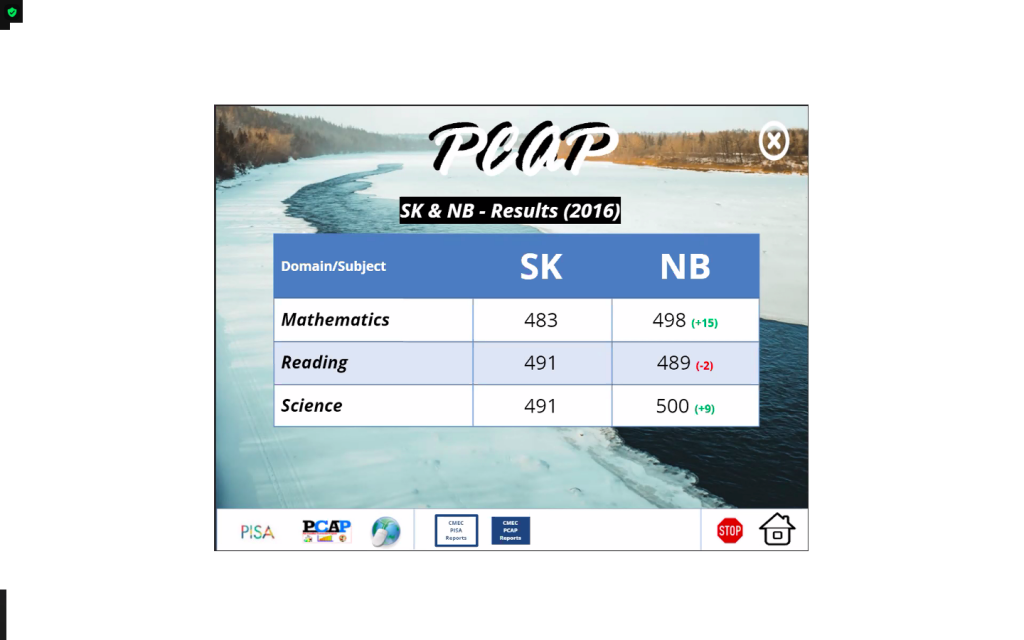
I am curious why there is a chart describing the difference in gender in the sense of achievement? In an inclusive world, why does there need to be much focus on what female and male students can do better? Another thing is what about students who identify as non-binary or transgender? Does there need to be such a divide? I am genuinely curious to know why this exists and why these findings are significant?
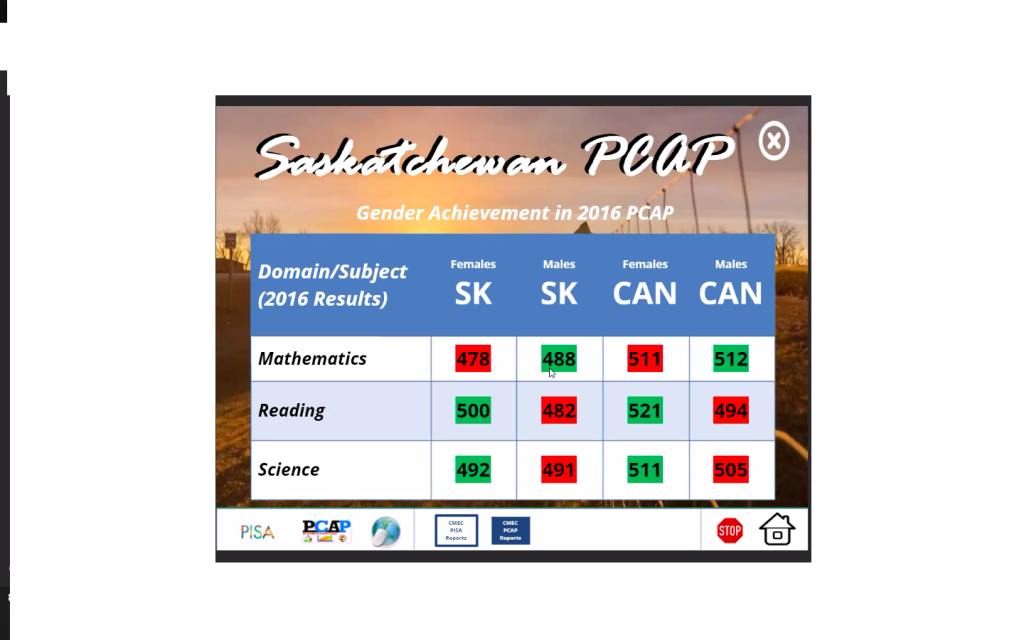
Subject Consideration
Math, reading, and science are all important skills/subjects to observe but one has to wonder what about including other subjects or skills to observe. Two that come to mind are writing and Reconciliation education. Writing is important because it goes hand and hand with all three of the subjects listed in the analysis. Reconciliation and or Treaty education as well because it would be a step towards reconciliation. Gauging student understanding of Treaty in Canada and around the world would be something to consider.
My end score reflects my room for growth when it comes to creating a meaningful assessment. Something I will certainly be focusing on is reaching out to outside sources to gauge assessment.
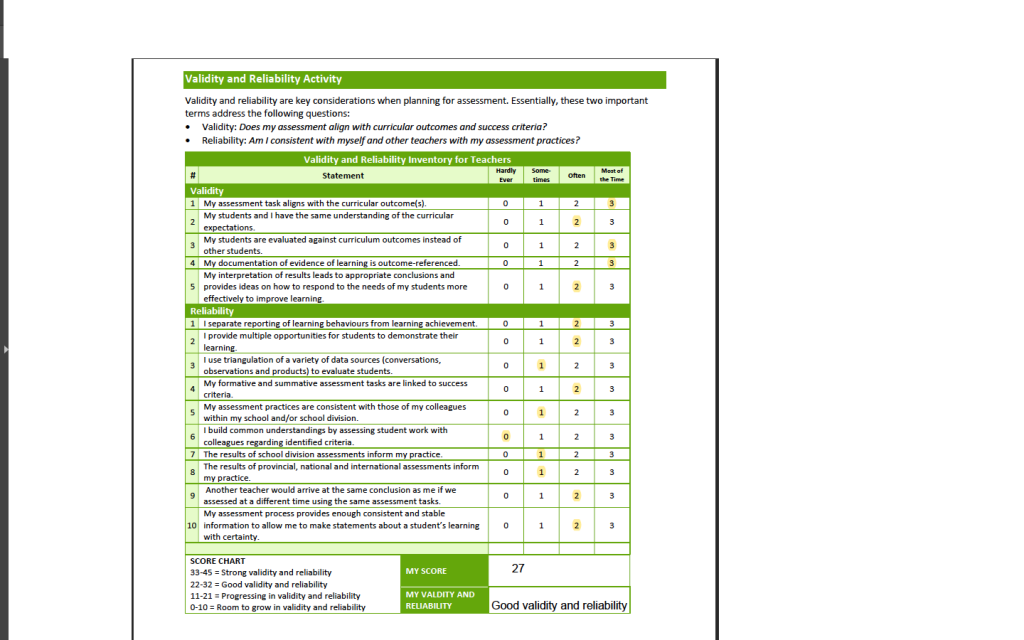
The areas circled as 0 are areas where I have not had the opportunity to practice these in the classroom. Overall, this graph shows I have a solid understanding of adaption but room to grow.
